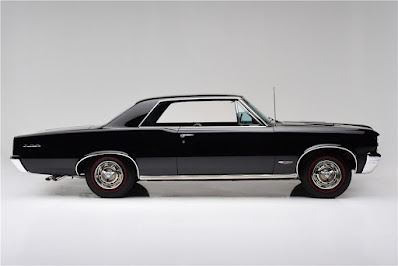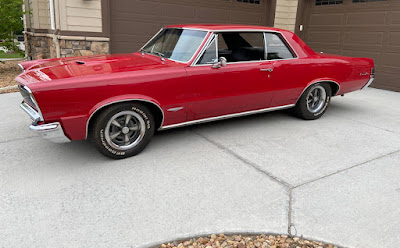Sunday, October 24, 2021
1964 Pontiac Tempest GTO - Blurred Lines
Wednesday, October 20, 2021
1965 Pontiac GTO - For Better or Worse
Saturday, October 16, 2021
1982 Porsche 944 - Loud and Clear
I found this rather worn but still apparently used as a daily driver Porsche 944 the other day in the parking lot of the giant Walmart near our triple-wide on the west side of Cleveland, Ohio. And it took me back. Way back.
The whole notion of a car with an engine mounted behind the driver is, no pun intended, instinctively foreign to me. When I was a kid I believed in the grain-fed, all-American notion that a car should have its V-8 engine and its transmission mounted in front of the driver and passengers with torque transfered by a shaft to the axle mounted out back. Therefore, no matter how much I'd read about the packaging and handling of anything different, Porsche's were odd-ducks driven by wealthy people who just wanted to show off they could afford expensive things regardless of how good (or not) something was. I did, ironically enough, find Volkswagen Beetles charming but that was probably due to familiarity; there were plenty of Beetles where I grew up and I don't recall any Porsche's.
But then the Porsche 944 came along and as oddly shaped as I found it, and despite it powered by a god-damn four-cylinder engine, when I realized it was a front-engine, rear-driver, it got my attention. Keep in mind that I was completely unaware at the time that the Porsche 928 even existed.
Porsche built these things from 1982 through 1991 and they were meant to replace the much unloved 924 model they'd been shilling since 1976. The 924 was actually built by Audi and was the first "Porsche" to be powered by a "water-cooled" engine that was mounted in front of the driver. Torque was transferred to a rear mounted "trans-axle" via a drive-shaft or "torque-tube". The 924 replaced the 914 as an "entry-level" Porsche. Ha. As if there really ever was such a thing, right? The 914, incidentally, was a rear-engine, air-cooled car just like the 911.
The 944 was built off the same platform as the 924 but it had a larger (still four-cylinder) engine, improved suspension, improved interior "ergonomics" and subtle styling changes to distinquish it from the 924. And the pundits loved it. In a 1984 comparison test amongst import sporting cars, they ranked the best handling car in America besting the Porsche 928 in the same test. So, Porsche built a car that could out-handle their 928, cost thousands less and, according to Car and Driver, could be driven "every-day"?
Looks like whomever owns this one here got that message loud and clear.
























































